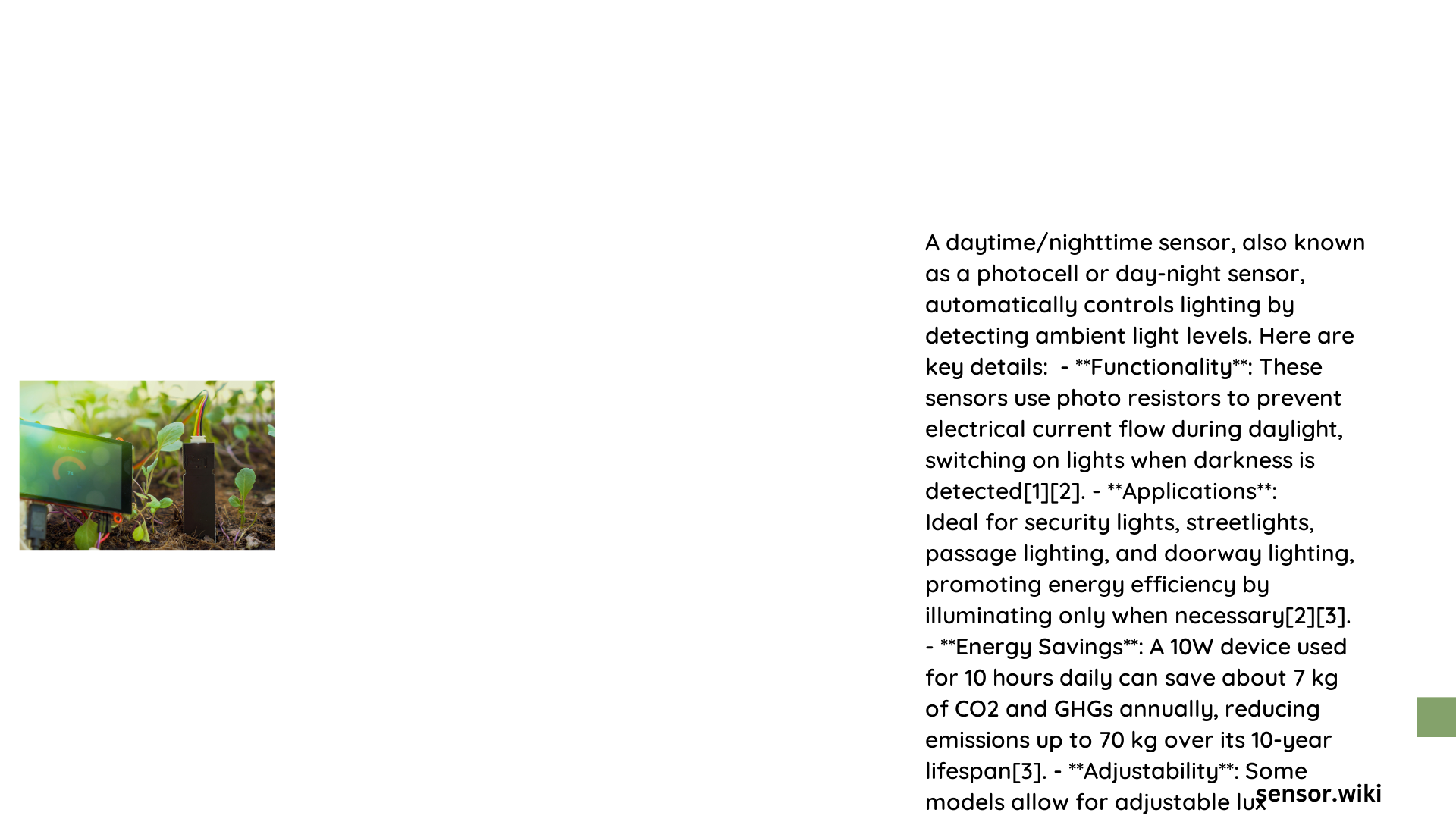Daytime nighttime sensors represent sophisticated technological solutions designed to automatically detect and respond to ambient light conditions, enabling intelligent illumination management across residential, commercial, and industrial environments. These advanced sensors utilize precision light measurement techniques to distinguish between daylight and darkness, facilitating energy-efficient lighting control through real-time environmental monitoring and adaptive response mechanisms.
What Are Daytime Nighttime Sensors?
Daytime nighttime sensors are specialized electronic devices engineered to measure light intensity and automatically trigger lighting adjustments based on environmental illumination levels. These sensors employ advanced photometric technologies to detect subtle changes in ambient light, enabling smart systems to optimize energy consumption and provide consistent illumination.
How Do Daytime Nighttime Sensors Work?
Light Measurement Principles
- Photometric Detection: Utilizes semiconductor-based light sensors
- Spectral Sensitivity: Measures light across visible and near-infrared spectrums
- Dynamic Range: Capable of detecting illumination from 0.01 to 83,000 lux
| Sensor Type | Measurement Range | Response Time | Power Consumption |
|---|---|---|---|
| OPT3001 | 0.01 – 83,000 lux | 600-1000 ms | 1.8 µA |
| BH1750 | 1 – 65,535 lux | Variable | Low |
| Casambi | Configurable | Adjustable | Minimal |
What Are Key Performance Characteristics?
Operational Specifications
- Sensitivity Settings: Configurable response thresholds
- Integration Capabilities: Compatible with various smart home/building systems
- Environmental Adaptability: Robust performance across temperature ranges
Where Are Daytime Nighttime Sensors Deployed?
Application Domains
- Smart Home Automation
- Automatic lighting control
- Energy efficiency optimization
-
Circadian rhythm management
-
Commercial Environments
- Office lighting systems
- Warehouse illumination
-
Retail space management
-
Industrial Applications
- Manufacturing facility lighting
- Security system integration
- Process control environments
How to Select the Right Daytime Nighttime Sensor?
Selection Criteria
- Measurement Accuracy
- Power Consumption
- Integration Complexity
- Cost-effectiveness
- Environmental Requirements
Installation Best Practices
Mounting Recommendations
- Optimal Height: 8-10 feet above floor level
- Clear Line of Sight: Minimize potential interference
- Calibration Procedure:
- Use professional lux meter
- Measure ambient light conditions
- Configure sensor sensitivity
- Test and validate performance
Technical Considerations
Performance Metrics
- Dynamic Range: Determines sensor’s adaptability
- Response Time: Indicates system’s reactivity
- Power Efficiency: Crucial for long-term deployment
Cost and Lifespan Analysis
Economic Evaluation
- Initial Purchase: $50 – $200 per unit
- Installation Costs: $100 – $500
- Expected Lifespan: 10-15 years
- Energy Savings: Significant long-term benefits
Conclusion

Daytime nighttime sensors represent a critical technological innovation in intelligent lighting management, offering unprecedented precision and efficiency in environmental illumination control.
